François Bancilhon
A Multi-Label Dataset of French Fake News: Human and Machine Insights
Apr 11, 2024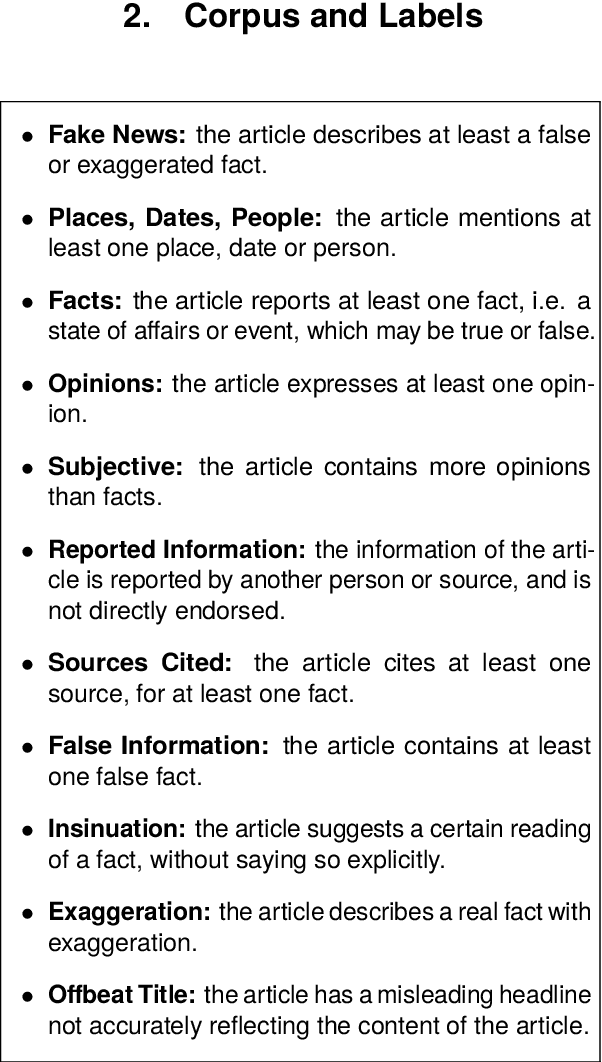

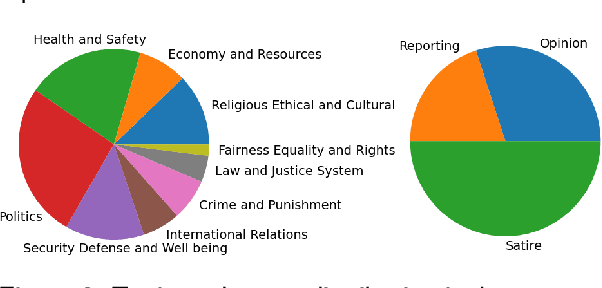

Abstract:We present a corpus of 100 documents, OBSINFOX, selected from 17 sources of French press considered unreliable by expert agencies, annotated using 11 labels by 8 annotators. By collecting more labels than usual, by more annotators than is typically done, we can identify features that humans consider as characteristic of fake news, and compare them to the predictions of automated classifiers. We present a topic and genre analysis using Gate Cloud, indicative of the prevalence of satire-like text in the corpus. We then use the subjectivity analyzer VAGO, and a neural version of it, to clarify the link between ascriptions of the label Subjective and ascriptions of the label Fake News. The annotated dataset is available online at the following url: https://github.com/obs-info/obsinfox Keywords: Fake News, Multi-Labels, Subjectivity, Vagueness, Detail, Opinion, Exaggeration, French Press
Exposing propaganda: an analysis of stylistic cues comparing human annotations and machine classification
Feb 07, 2024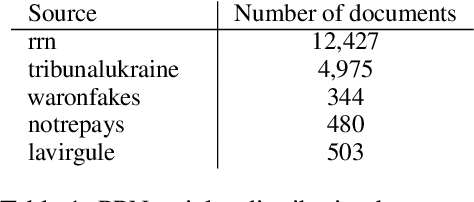
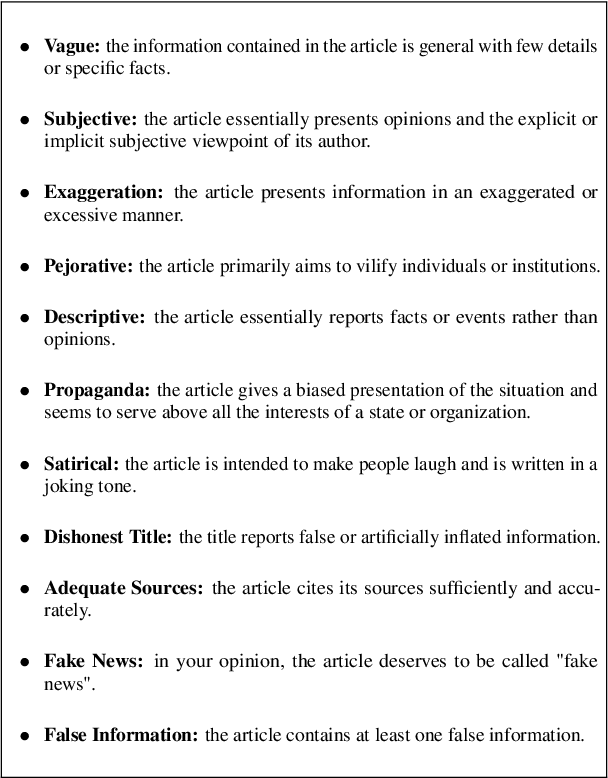
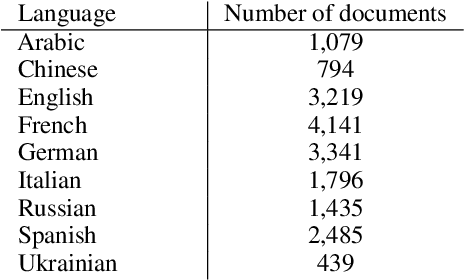
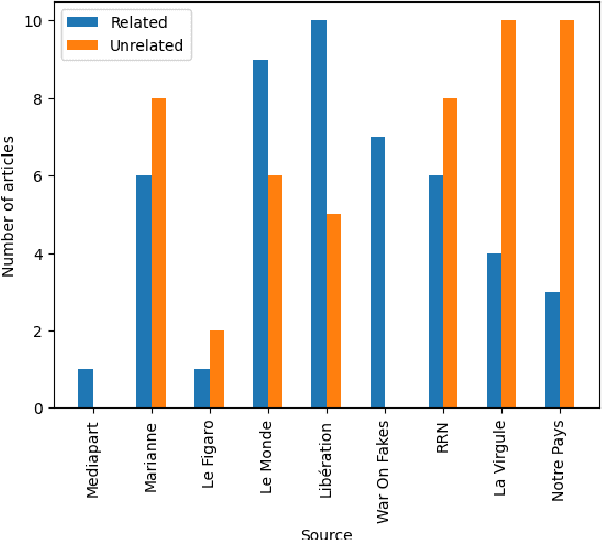
Abstract:This paper investigates the language of propaganda and its stylistic features. It presents the PPN dataset, standing for Propagandist Pseudo-News, a multisource, multilingual, multimodal dataset composed of news articles extracted from websites identified as propaganda sources by expert agencies. A limited sample from this set was randomly mixed with papers from the regular French press, and their URL masked, to conduct an annotation-experiment by humans, using 11 distinct labels. The results show that human annotators were able to reliably discriminate between the two types of press across each of the labels. We propose different NLP techniques to identify the cues used by the annotators, and to compare them with machine classification. They include the analyzer VAGO to measure discourse vagueness and subjectivity, a TF-IDF to serve as a baseline, and four different classifiers: two RoBERTa-based models, CATS using syntax, and one XGBoost combining syntactic and semantic features.
 Add to Chrome
Add to Chrome Add to Firefox
Add to Firefox Add to Edge
Add to Edge